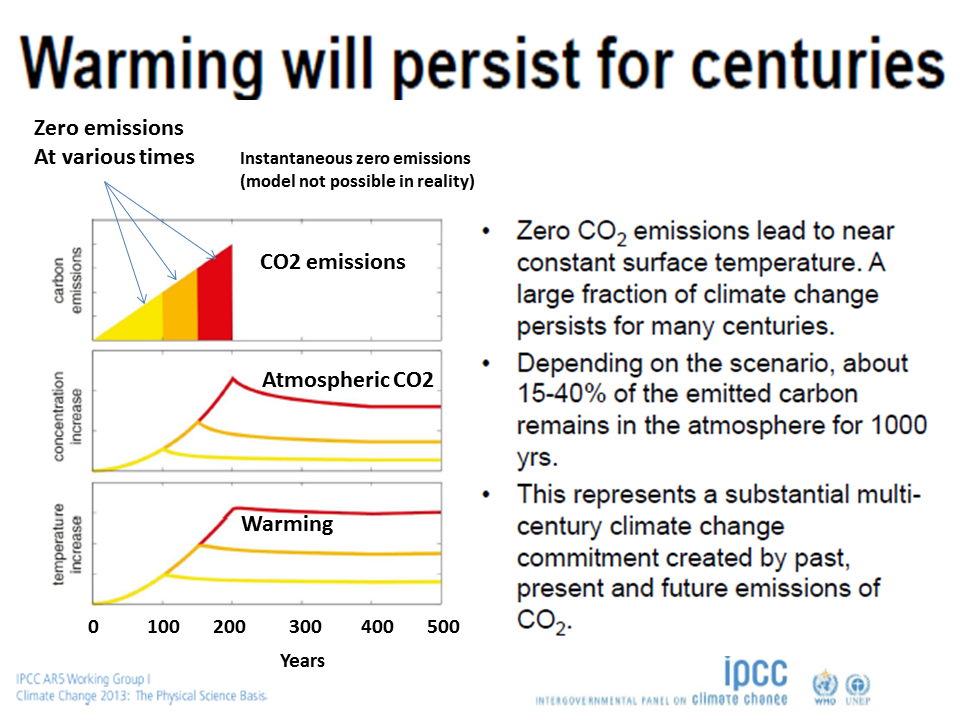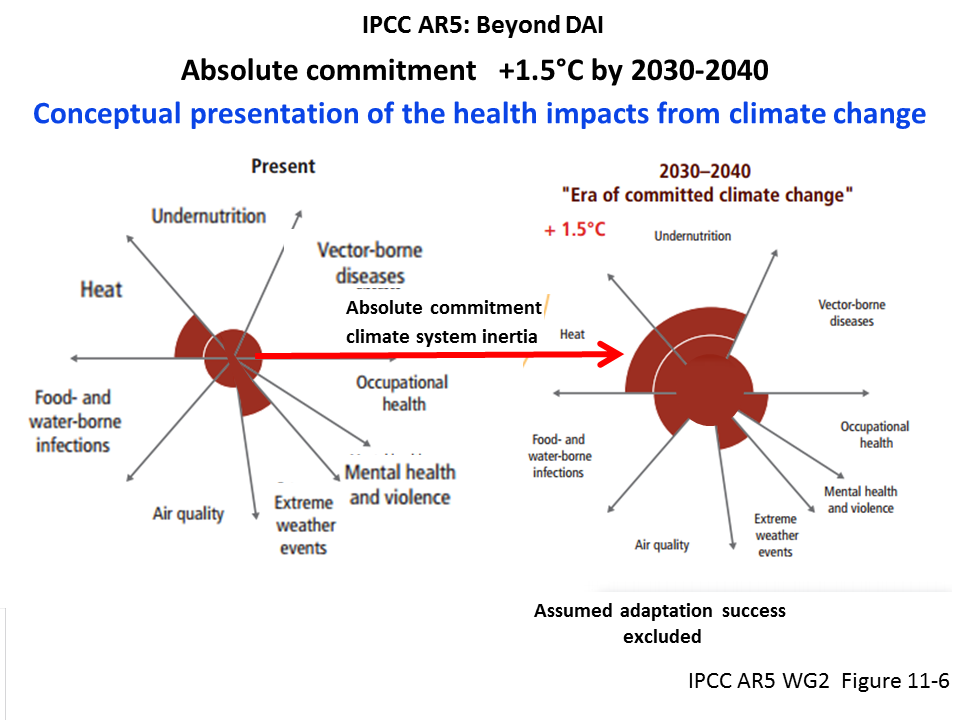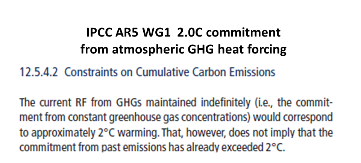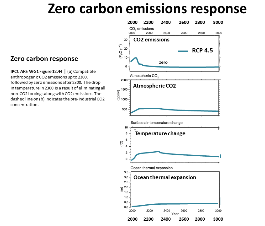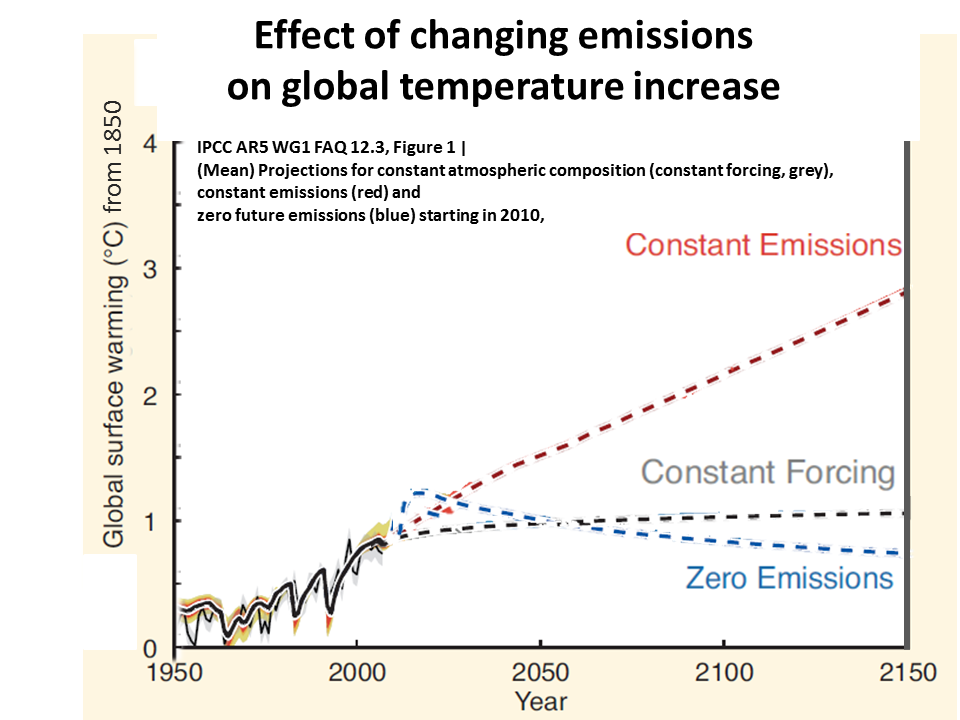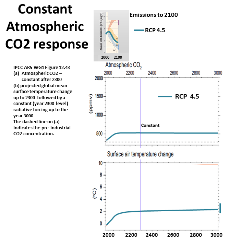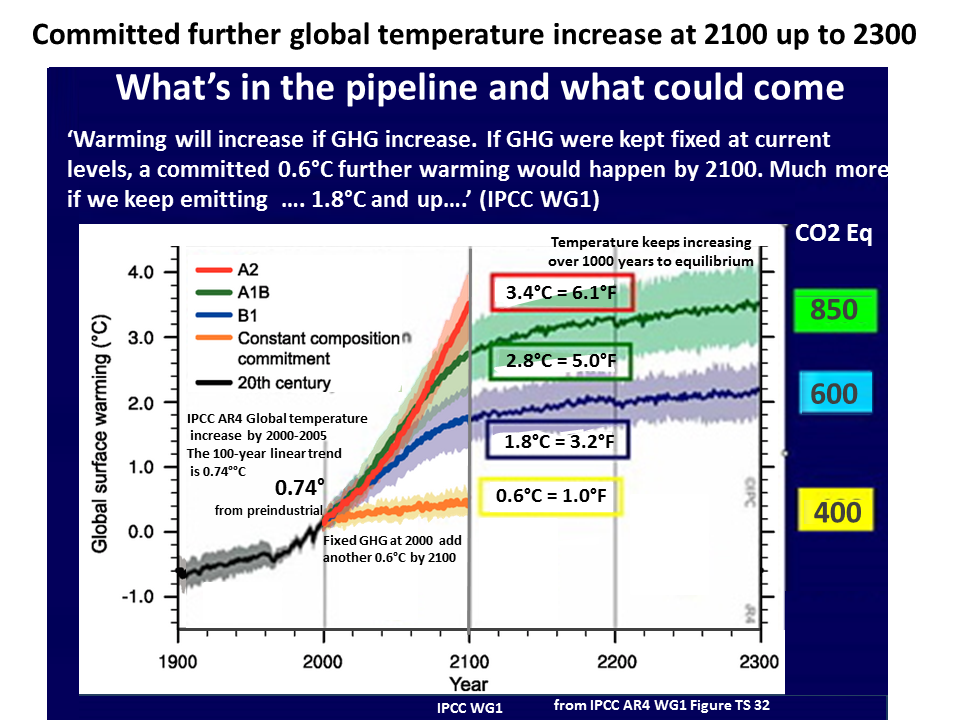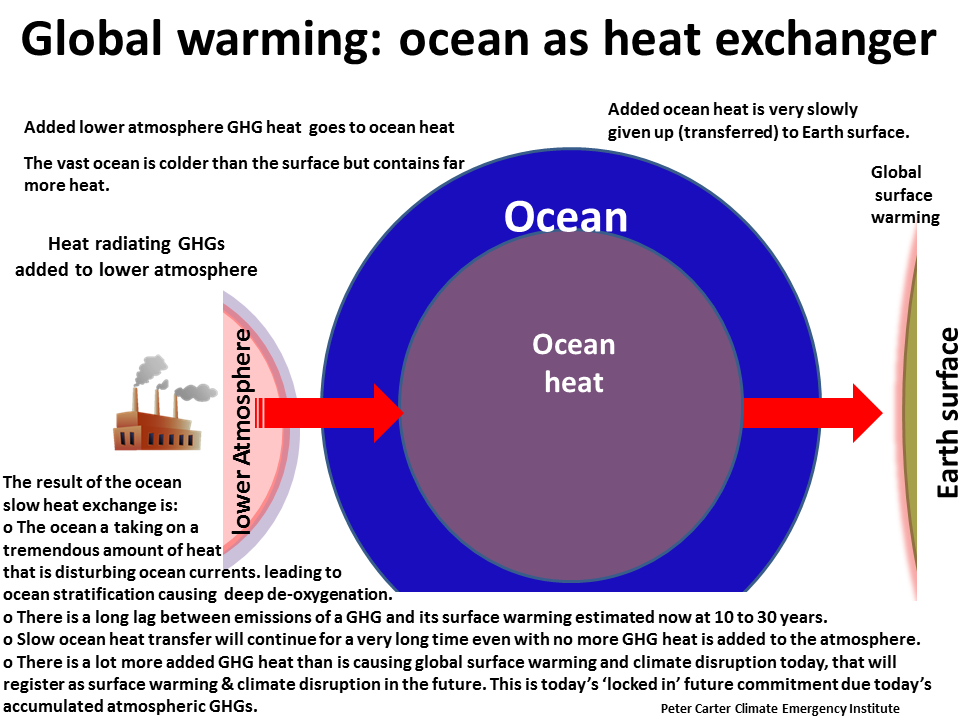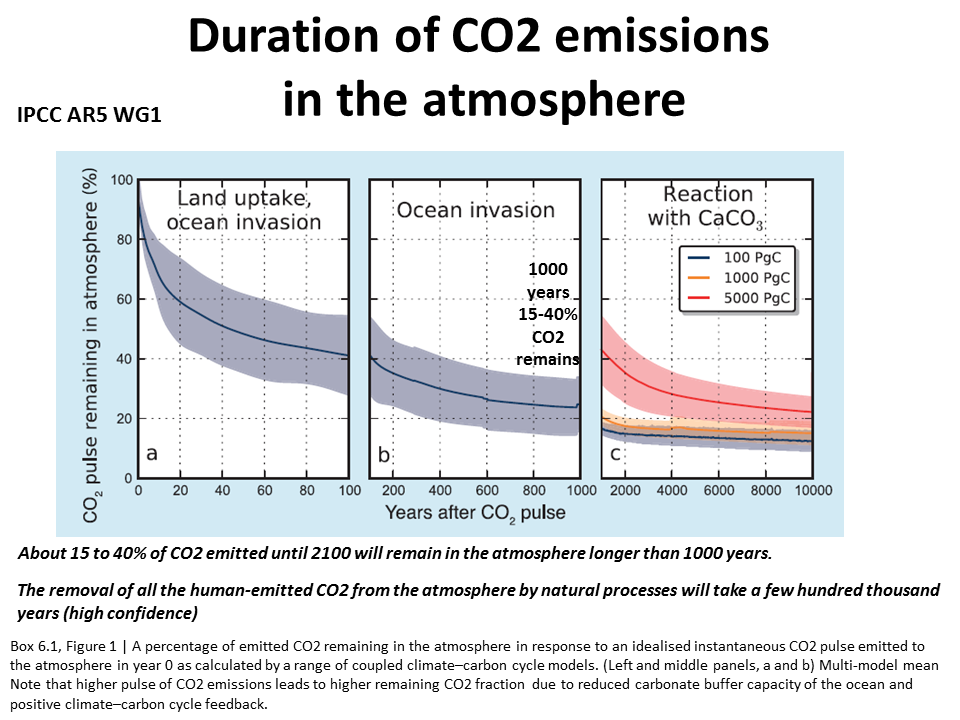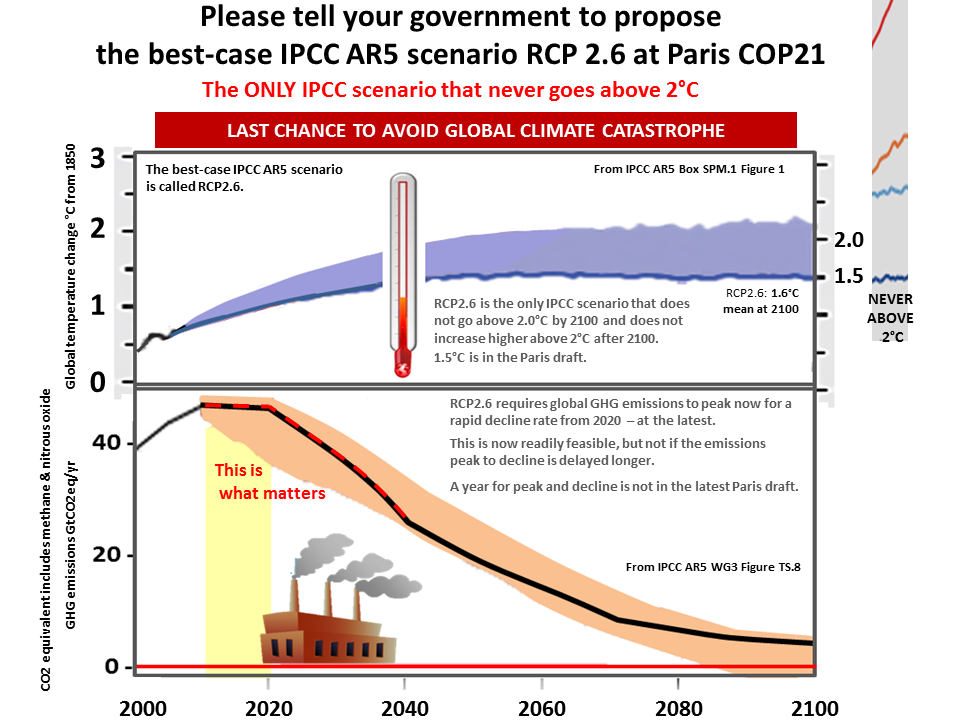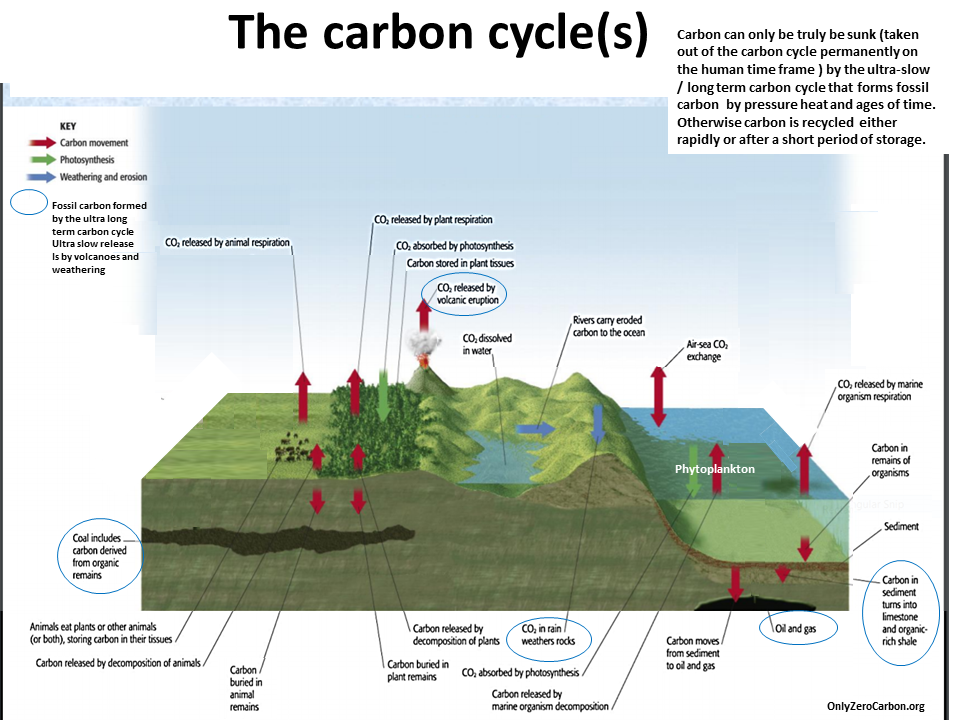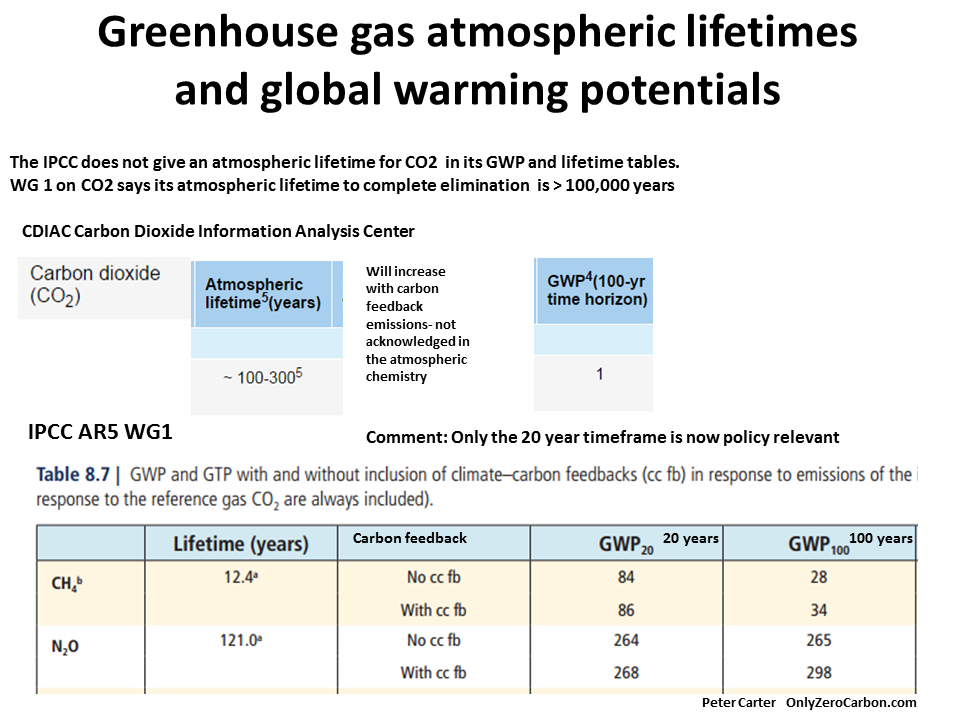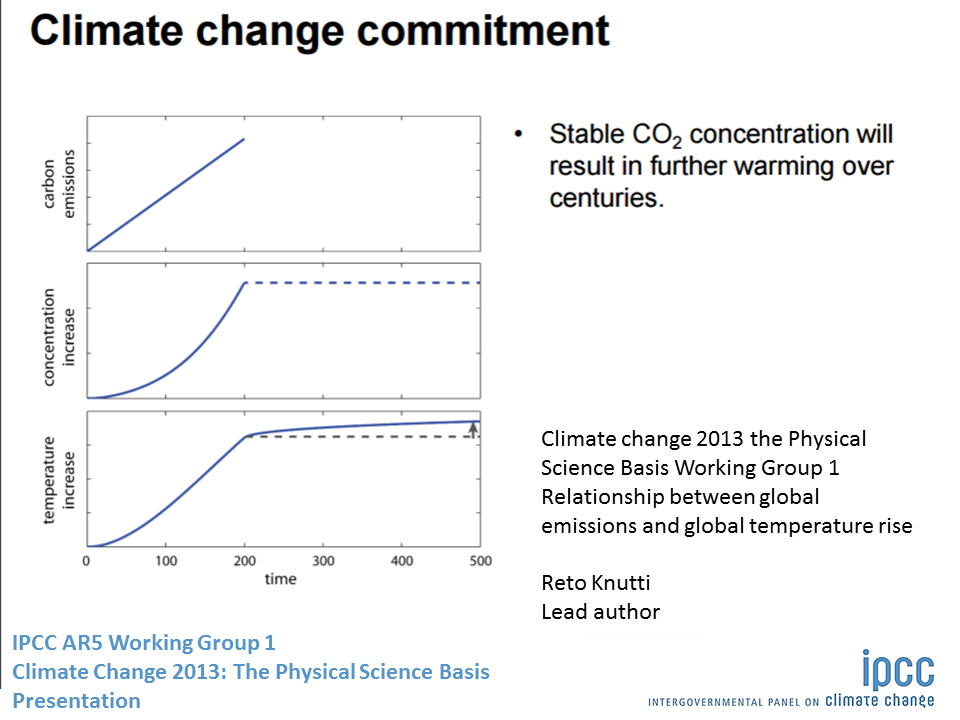ONLY ZERO CARBON ONLY ZERO CARBON ONLY ZERO CARBON ONLY ZERO CARBON ONLY ZERO CARBON ONLY ZERO CARBON
Science
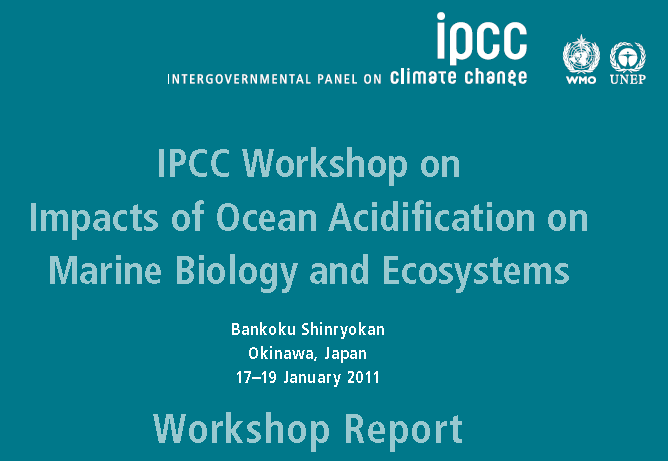
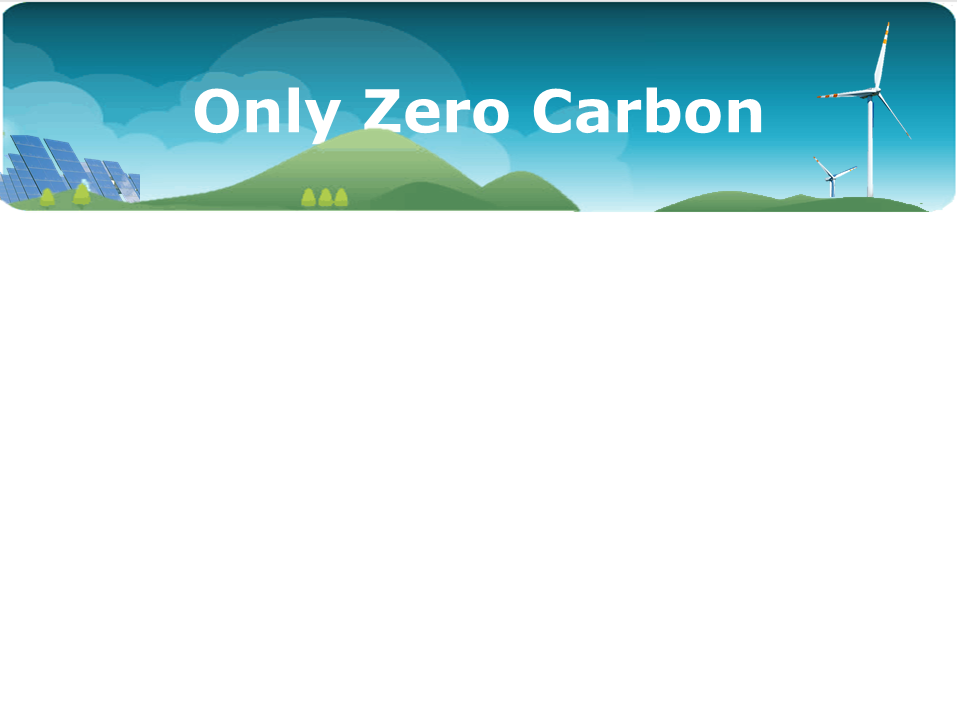
Commitment
Today we are committed (locked in) to a far greater degree of global warming/climate change than we are experiencing today and it will last over a thousand years. The climate is being changed permanently in terms of human civilization.
We are committed to day to much more global climate change, so there is no so-called allowable carbon budget of more emissions.
This commitment tells us that global emissions must be declined right away and decline rapidly. By accounting for all sources of extra future warming we have no allowable carbon budget of more emissions.
Furthermore and the so called budget is only for a better than 66% chance of the now obviously totally disastrous 2C and this is only up to 2100.
Today (2016) The global surface temperature increase has been allowed to increase above 1.0C and many widespread disastrous effects of global climate change have occurred over the past decade. This affects how we apply the science.
Due to the extreme long life time of CO2 in the atmosphere the global temperature (and ocean acidification) cannot stabilize without our CO2 emissions being near zero.
Despite this global emissions are still not declining and the national emissions targets under the Paris Agreement will lead to more emissions over the next 15 years.
There are several sources of unavoidable extra committed future warming on top of today's that combine to put the world in a catastrophic situation.
Sources that combine leading to unavoidable future committed or locked in further warming.
1. Delay in policies to put global emissions into decline. As of 2016 this is decades
2. Time required for switching all fossil fuel energy to clean zero carbon sources (when such policies are implemented). The minimum estimate is 10-20 years.
2. The accumulated ocean heat from post industrial long lived GHG emissions (CO2, methane and nitrous oxide), which is retained by the ocean for many 100s of years. This applies up to the time that emissions are cut to near zero.
3. The extreme long atmospheric life time of CO2 (and nitrous oxide), that are both over one hundred years.
4. The fact that methane and nitrous are much more powerful global warming GHGs than CO2 (methane 80 X more and nitrous oxide 260 X more)
5. Amplifying feedbacks from the planet in response to global warming, of which there are several large sources.
For all the above there are a range of estimates as to their contributions to committed warming. How ever they are all significant and they put us over 2C warming, even by 2100, which is higher after 2100.
The IPCC AR5 estimates that today's atmospheric GHG concentrations alone commit us to 2C of warming (up to and after 2100). We are therefore for sure over 2C.
Excluding 1 and 2 above, the climate science commitment is mainly due to the ultra-long carbon cycle that determines the ultra-long atmospheric lifetime of CO2 emissions. The ocean heat thermal inertia (heat lag), which applies to all the GHGs, reinforces this, so that even in the hypothetical situation of an instant zero to all emissions the temperature increase would be sustained for many centuries.
The 2014 IPCC AR5's best case emissions scenario (RCP 2.6) reaches a global temperature increase of 1.6C by 2100 and the warming is limited to 1.5C after 2100.
RCP2.6 requires all three main GHG emissions to stop increasing right away and declining rapidly from 2020 at the very latest. It also would require removal of CO2 from the atmosphere after 2050. As CO2 removal at any scale for any prolonged period is currently not feasible, the RCP 2.6 scenario tells us global emissions must be declined right away and decline rapidly.
Unlimited
So long as there is no plan that targets zero carbon emissions, our commitment to future climate change is unlimited. This is due to the ultra-long atmospheric lifetime of CO2 emissions.
Climate science 'commitment'
The 2007 IPCC 4th assessment provided a most important extra price of information with its temperature increase projections. This is the constant composition commitment. If the atmospheric concentration of the GHGs had stayed the same from 2000 the surface would still warm another 0.6C by 2100. This is the locked in extra warming 'in the pipe' at 2000. Similarly warming at 2100 will be committed to increase further-by about another 75% slowly over the very long term after 2100.
Climate science treats future climate change as the commitment from the ocean heat lag (ocean thermal inertia) and the very long atmospheric lifetime of CO2.
The ocean thermal inertia combines with the ultra slow decline of emitted CO2 in the atmosphere so that even if emissions were to stop immediately the global temperature increase would remain the same for hundreds of years, and warming would persist for over a thousand years.
From time of atmospheric CO2 (and GHGs general), stabilization in the atmosphere, the global temperature increase only slows. By the time the temperature stabilizes, which takes centuries, the temperature increase at the time of atmospheric GHG stabilization will have increased about another 75%. For this reason the the warming at the time of atmospheric GHG stabilization is called the 'transient' warming, which increases at a slowly slowing rate, till it eventually stabilizes at the 'equilibrium' warming.
The IPCC 2014 AR5 confirmed that 'Many aspects of climate change and associated impacts will continue for centuries, even if anthropogenic emissions of greenhouse gases are stopped. The risks of abrupt or irreversible changes increase as the magnitude of the warming increases' (IPCC AR5 Synthesis SPM & Headlines).
For many years the estimate of the ocean heat lag has been about 30 years, up to 50 years. The most recent research (K. Zickfeld) June 2015 makes it less and more interesting with respect to today's CO2 emissions.
'Our results indicate that as CO2 continues to accumulate in the atmosphere, the full warming effect of an
emission may take several decades, if not centuries to emerge.
A large fraction of the warming, however, will be realized relatively quickly (93% of the peak warming
is realized 10 years after the emissions for the 1000 PgC pulse). This implies that the warming commitment
from past CO2 emissions is (relatively) small, and that future warming will largely be determined by current and future CO2 emissions. Each additional CO2 emission will contribute to warming that will persist almost indefinitely. Thus, emission reductions implemented today will equally benefit current and future
generations.'
There still (2016) is no such zero carbon plan. The IPCC 2014 AR5 assessment was the first assessment to specifically state that carbon emissions have to reach virtual zero for climate change mitigation in the policy making Summary for Policy makers (SPM).
'Mitigation pathways ... require substantial emissions reductions over the next few decades and near zero emissions of carbon dioxide and other long-lived greenhouse gases by the end of the century'. (IPCC AR5 SYN Headline statements from the Summary for Policymakers).
The Dec 2012 UN Paris Agreement avoided zero emissions, instead made a meaningless statement about 'balance'. Therefore our commitment to all future generations remains unlimited.
This commitment mainly is the result of the extremely long time that CO2 emissions has in the atmosphere
Because climate change impacts of mitigation are determined by various inertias (or long lags between cause and effect) today we are already committed to a much higher temperature than we experience today- several times today's warming in fact.
The IPCC covered this well in the 2001 IPCC TAR assessment under the heading of Inertia.
Because CO2 lasts so long in the atmosphere even stopping CO2 emissions only results in a slight decline in atmospheric CO2 and no decline in the global warming which stays constant.
Cumulative CO2
For this reason global warming depends on cumulative CO2 (eq) emissions - all the emissions since industrialization. Emissions include fossil fuels and deforestation. However that does not mean that only cumulative CO2 determines future global warming- in the same way the other long lasting GHGs do as well. CO2 equivalent emissions accounts for methane and nitrous oxide emissions. The IPCC assessments focus on CO2 only, a large source of error
2014 IPCC AR5 WG1 presentation:
Relationship Between Global Emissions and Temperature Rise
We are committed to day to much more global climate change, so there is no so-called allowable carbon budget of more emissions.
This commitment tells us that global emissions must be declined right away and decline rapidly. By accounting for all sources of extra future warming we have no allowable carbon budget of more emissions.
Furthermore and the so called budget is only for a better than 66% chance of the now obviously totally disastrous 2C and this is only up to 2100.
Today (2016) The global surface temperature increase has been allowed to increase above 1.0C and many widespread disastrous effects of global climate change have occurred over the past decade. This affects how we apply the science.
Due to the extreme long life time of CO2 in the atmosphere the global temperature (and ocean acidification) cannot stabilize without our CO2 emissions being near zero.
Despite this global emissions are still not declining and the national emissions targets under the Paris Agreement will lead to more emissions over the next 15 years.
There are several sources of unavoidable extra committed future warming on top of today's that combine to put the world in a catastrophic situation.
Sources that combine leading to unavoidable future committed or locked in further warming.
1. Delay in policies to put global emissions into decline. As of 2016 this is decades
2. Time required for switching all fossil fuel energy to clean zero carbon sources (when such policies are implemented). The minimum estimate is 10-20 years.
2. The accumulated ocean heat from post industrial long lived GHG emissions (CO2, methane and nitrous oxide), which is retained by the ocean for many 100s of years. This applies up to the time that emissions are cut to near zero.
3. The extreme long atmospheric life time of CO2 (and nitrous oxide), that are both over one hundred years.
4. The fact that methane and nitrous are much more powerful global warming GHGs than CO2 (methane 80 X more and nitrous oxide 260 X more)
5. Amplifying feedbacks from the planet in response to global warming, of which there are several large sources.
For all the above there are a range of estimates as to their contributions to committed warming. How ever they are all significant and they put us over 2C warming, even by 2100, which is higher after 2100.
The IPCC AR5 estimates that today's atmospheric GHG concentrations alone commit us to 2C of warming (up to and after 2100). We are therefore for sure over 2C.
Excluding 1 and 2 above, the climate science commitment is mainly due to the ultra-long carbon cycle that determines the ultra-long atmospheric lifetime of CO2 emissions. The ocean heat thermal inertia (heat lag), which applies to all the GHGs, reinforces this, so that even in the hypothetical situation of an instant zero to all emissions the temperature increase would be sustained for many centuries.
The 2014 IPCC AR5's best case emissions scenario (RCP 2.6) reaches a global temperature increase of 1.6C by 2100 and the warming is limited to 1.5C after 2100.
RCP2.6 requires all three main GHG emissions to stop increasing right away and declining rapidly from 2020 at the very latest. It also would require removal of CO2 from the atmosphere after 2050. As CO2 removal at any scale for any prolonged period is currently not feasible, the RCP 2.6 scenario tells us global emissions must be declined right away and decline rapidly.
Unlimited
So long as there is no plan that targets zero carbon emissions, our commitment to future climate change is unlimited. This is due to the ultra-long atmospheric lifetime of CO2 emissions.
Climate science 'commitment'
The 2007 IPCC 4th assessment provided a most important extra price of information with its temperature increase projections. This is the constant composition commitment. If the atmospheric concentration of the GHGs had stayed the same from 2000 the surface would still warm another 0.6C by 2100. This is the locked in extra warming 'in the pipe' at 2000. Similarly warming at 2100 will be committed to increase further-by about another 75% slowly over the very long term after 2100.
Climate science treats future climate change as the commitment from the ocean heat lag (ocean thermal inertia) and the very long atmospheric lifetime of CO2.
The ocean thermal inertia combines with the ultra slow decline of emitted CO2 in the atmosphere so that even if emissions were to stop immediately the global temperature increase would remain the same for hundreds of years, and warming would persist for over a thousand years.
From time of atmospheric CO2 (and GHGs general), stabilization in the atmosphere, the global temperature increase only slows. By the time the temperature stabilizes, which takes centuries, the temperature increase at the time of atmospheric GHG stabilization will have increased about another 75%. For this reason the the warming at the time of atmospheric GHG stabilization is called the 'transient' warming, which increases at a slowly slowing rate, till it eventually stabilizes at the 'equilibrium' warming.
The IPCC 2014 AR5 confirmed that 'Many aspects of climate change and associated impacts will continue for centuries, even if anthropogenic emissions of greenhouse gases are stopped. The risks of abrupt or irreversible changes increase as the magnitude of the warming increases' (IPCC AR5 Synthesis SPM & Headlines).
For many years the estimate of the ocean heat lag has been about 30 years, up to 50 years. The most recent research (K. Zickfeld) June 2015 makes it less and more interesting with respect to today's CO2 emissions.
'Our results indicate that as CO2 continues to accumulate in the atmosphere, the full warming effect of an
emission may take several decades, if not centuries to emerge.
A large fraction of the warming, however, will be realized relatively quickly (93% of the peak warming
is realized 10 years after the emissions for the 1000 PgC pulse). This implies that the warming commitment
from past CO2 emissions is (relatively) small, and that future warming will largely be determined by current and future CO2 emissions. Each additional CO2 emission will contribute to warming that will persist almost indefinitely. Thus, emission reductions implemented today will equally benefit current and future
generations.'
There still (2016) is no such zero carbon plan. The IPCC 2014 AR5 assessment was the first assessment to specifically state that carbon emissions have to reach virtual zero for climate change mitigation in the policy making Summary for Policy makers (SPM).
'Mitigation pathways ... require substantial emissions reductions over the next few decades and near zero emissions of carbon dioxide and other long-lived greenhouse gases by the end of the century'. (IPCC AR5 SYN Headline statements from the Summary for Policymakers).
The Dec 2012 UN Paris Agreement avoided zero emissions, instead made a meaningless statement about 'balance'. Therefore our commitment to all future generations remains unlimited.
This commitment mainly is the result of the extremely long time that CO2 emissions has in the atmosphere
Because climate change impacts of mitigation are determined by various inertias (or long lags between cause and effect) today we are already committed to a much higher temperature than we experience today- several times today's warming in fact.
The IPCC covered this well in the 2001 IPCC TAR assessment under the heading of Inertia.
Because CO2 lasts so long in the atmosphere even stopping CO2 emissions only results in a slight decline in atmospheric CO2 and no decline in the global warming which stays constant.
Cumulative CO2
For this reason global warming depends on cumulative CO2 (eq) emissions - all the emissions since industrialization. Emissions include fossil fuels and deforestation. However that does not mean that only cumulative CO2 determines future global warming- in the same way the other long lasting GHGs do as well. CO2 equivalent emissions accounts for methane and nitrous oxide emissions. The IPCC assessments focus on CO2 only, a large source of error
2014 IPCC AR5 WG1 presentation:
Relationship Between Global Emissions and Temperature Rise
Total commitment: all unavoidable sources of future warming and climate change
Here are the unavoidable sources of additional warming today on top of our recorded global average warming of 0.8C. It is an exerise in the basics of global climate change science.
A more accurate word might be this is what all future generations are 'condemned' to as a result of the amount of greenhouse gases that have been allowed to accumulate in the atmosphere.
1. Incurred warming - time to stabilize atmospheric greenhouse gases assuming a world wide emergency response. This is the warming incurred over the time it takes from today to get to virtual zero carbon emissions.
This includes time for the public and policy makers to realize we are all in a state of planetary emergency, the time to fix the perverse fossil fuel biased economics (stop fossil fuel subsidies and correct the greatest ever market failure (2006 Stern Commission), and redevelop the world energy infrastructure to switch from fossil fuels to clean zero carbon energy sources. As things stand today this time is unlimited.
To stabilize atmospheric CO2 emissions have to be cut virtually to zero. How long this takes determines the incurred warming. Most of the climate change science has always contemplated at least 50 years for this. The shortest time we have published is 25 years.
Even when emissions are virtual zero the is more warming to come ('in the pipe')
2. Hidden warming - ocean heat lag
The ocean heat lag is an extra commitment source.
The assessments only account for this as a commitment source.
It is about another 75% of the warming at the time atmospheric GHGs stabilize.
3. Amplifying carbon feedbacks.
Zero carbon must account for extra carbon emissions from carbon feedbacks, but this is not accounted for in the assessments, a large source of error.
The greater and longer the CO2 emissions and the warming- the greater will be extra emissions and warming from carbon feedbacks.
Presently the land and oceans absorb ('sink' or rather store) about half of industrial carbon emissions, but that cannot last indefinitely. The sinks are not permanent, but will both weaken over time. This has probably started already( Raupach July 2014).
Because of large sources of planetary carbon global warming causes more global warming.
Today's global warming is already leading to more small amounts of carbon emissions from the warming planet surface,as CO2 and methane (CH4). The more warming (both time and temperature increase) the more extra carbon feedback warming there will be.
Here are the unavoidable sources of additional warming today on top of our recorded global average warming of 0.8C. It is an exerise in the basics of global climate change science.
A more accurate word might be this is what all future generations are 'condemned' to as a result of the amount of greenhouse gases that have been allowed to accumulate in the atmosphere.
1. Incurred warming - time to stabilize atmospheric greenhouse gases assuming a world wide emergency response. This is the warming incurred over the time it takes from today to get to virtual zero carbon emissions.
This includes time for the public and policy makers to realize we are all in a state of planetary emergency, the time to fix the perverse fossil fuel biased economics (stop fossil fuel subsidies and correct the greatest ever market failure (2006 Stern Commission), and redevelop the world energy infrastructure to switch from fossil fuels to clean zero carbon energy sources. As things stand today this time is unlimited.
To stabilize atmospheric CO2 emissions have to be cut virtually to zero. How long this takes determines the incurred warming. Most of the climate change science has always contemplated at least 50 years for this. The shortest time we have published is 25 years.
Even when emissions are virtual zero the is more warming to come ('in the pipe')
2. Hidden warming - ocean heat lag
The ocean heat lag is an extra commitment source.
The assessments only account for this as a commitment source.
It is about another 75% of the warming at the time atmospheric GHGs stabilize.
3. Amplifying carbon feedbacks.
Zero carbon must account for extra carbon emissions from carbon feedbacks, but this is not accounted for in the assessments, a large source of error.
The greater and longer the CO2 emissions and the warming- the greater will be extra emissions and warming from carbon feedbacks.
Presently the land and oceans absorb ('sink' or rather store) about half of industrial carbon emissions, but that cannot last indefinitely. The sinks are not permanent, but will both weaken over time. This has probably started already( Raupach July 2014).
Because of large sources of planetary carbon global warming causes more global warming.
Today's global warming is already leading to more small amounts of carbon emissions from the warming planet surface,as CO2 and methane (CH4). The more warming (both time and temperature increase) the more extra carbon feedback warming there will be.
